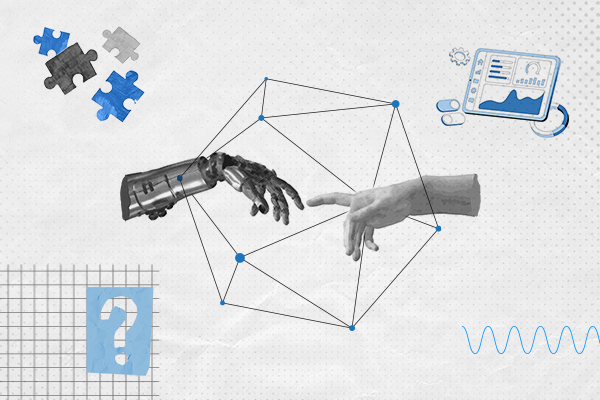

At first glance, AI-enhanced marketing automation seems like a productivity dream; tasks get done faster, decisions are more data-driven, and campaigns can be personalized at scale. But as the sophistication increases, so does complexity in people, processes, and platforms. Let’s explore whether this complexity is worth the payoff, and outline a neutral SWOT analysis to help you decide.
But with great power comes a new set of challenges and considerations.
To make sense of AI’s real impact on marketing automation, let’s break it down with a neutral SWOT analysis.
What Changed When AI Entered the Scene?

Traditional marketing automation relies on rule-based workflows; if X, then Y. With AI, systems can analyze behavior in real time, learn, optimize, and even predict outcomes autonomously. Use cases stretch beyond simple emails to predictive lead scoring, campaign performance monitoring, anomaly detection, creative generation, and automated actions (pause underperforming ads, reallocate budgets, etc.).
Global brands like Yum! (Taco Bell, KFC) and AMD are already seeing results; AI pilots leading to better customer engagement, faster creative generation, automated claim processing, and smarter partner targeting.
SWOT Analysis: AI in Marketing Automation

Strengths
- Efficiency Gains: AI handles tasks such as campaign monitoring, predictive targeting, reporting, and anomaly detection; freeing marketers for strategy and creativity.
- Scalability & Personalization: Real-time content personalization and dynamic audience segmentation increase conversion likelihood without manual hand-holding.
- Data-Driven Decisions: AI identifies patterns humans may miss and enables continuous optimization across campaigns.
Weaknesses
- Data Dependence: AI is only as good as the data; dirty, fragmented, or unstructured datasets can lead to inaccurate outcomes or bias.
- Steep Learning Curve: Teams accustomed to rule-based automation need new skills: data governance, AI prompt design, and machine-learning model interpretation.
- High Costs & Governance Needs: Licensing, training, ethical oversight, and tool integration introduce complexity and investment.
Opportunities
- Incremental Use Cases: Starting with simpler areas like reporting or meta-analysis before scaling into campaign orchestration allows gradual adoption.
- Real Business Impact: Brands like Marriott and TD Bank using unified AI CX platforms saw faster customer service resolution and cost reduction.
- Competitive Edge: Early adopters gain agility, advanced personalization, and operational efficiency; meeting rising consumer expectations faster.
Threats
- Ethical and Privacy Risks: AI may inadvertently create bias or violate privacy laws like GDPR or CCPA if not managed properly.
- Over-Reliance on Autonomy: Marketing becomes less strategic if teams lean too heavily on AI without human oversight, losing brand voice and emotional nuance.
- Integration Complexity: Legacy systems or fragmented stacks need careful architecture to ensure smooth data flow and operational integrity.
Real-World Lessons

- Yum Brands saw improved conversion rates using AI-optimized email timing and content. Their takeaway: AI needs strong data governance and human validation.
- AMD uses AI for creative drafts, training, translation, and targeting. They stress human review and maintain a Responsible AI council.
- Marriott & TD Bank, leveraging NICE’s AI CXone platform, improved customer service and simplified their marketing tech stack by automating touchpoints.
Best Practices to Balance Complexity

- Ensure Data Readiness: Clean, consolidated, and standardized datasets are the foundation of any AI automation strategy.
- Start Small, Scale Thoughtfully: Begin with simple use cases – like auto-report generation or anomaly spotting – and then evolve into more advanced orchestration.
- Train Teams Continuously: Equip staff with tool proficiency and analytical thinking to critically evaluate AI outcomes.
- Maintain Ethical Oversight: Establish governance – bias mitigation, compliance, and audits – to preserve trust.
- Ensure Human-in-the-Loop: AI should assist, not replace, human creativity and decision-making.
So, is AI Making Automation More Complex?

Yes, but complexity often signals richness, not risk. With AI comes powerful capabilities scalability, predictive personalization, and operational efficiency; but only if organizations invest in data hygiene, governance, human-AI collaboration, and incremental change.
Without governance and readiness, complexity burdens rather than benefits. With preparation and structure, AI can reduce manual burden, sharpen focus, and help marketers deliver meaningful, measurable impact.
Sources
- Improvado: How AI is Changing Marketing Automation
- WSJ: Yum! Brands Leverages AI to Boost Marketing Outcomes
- Business Insider: How AMD Uses AI to Accelerate Marketing
- Business Insider: NICE CXone and Marriott AI Case Study
- Gartner: The State of Marketing Automation
